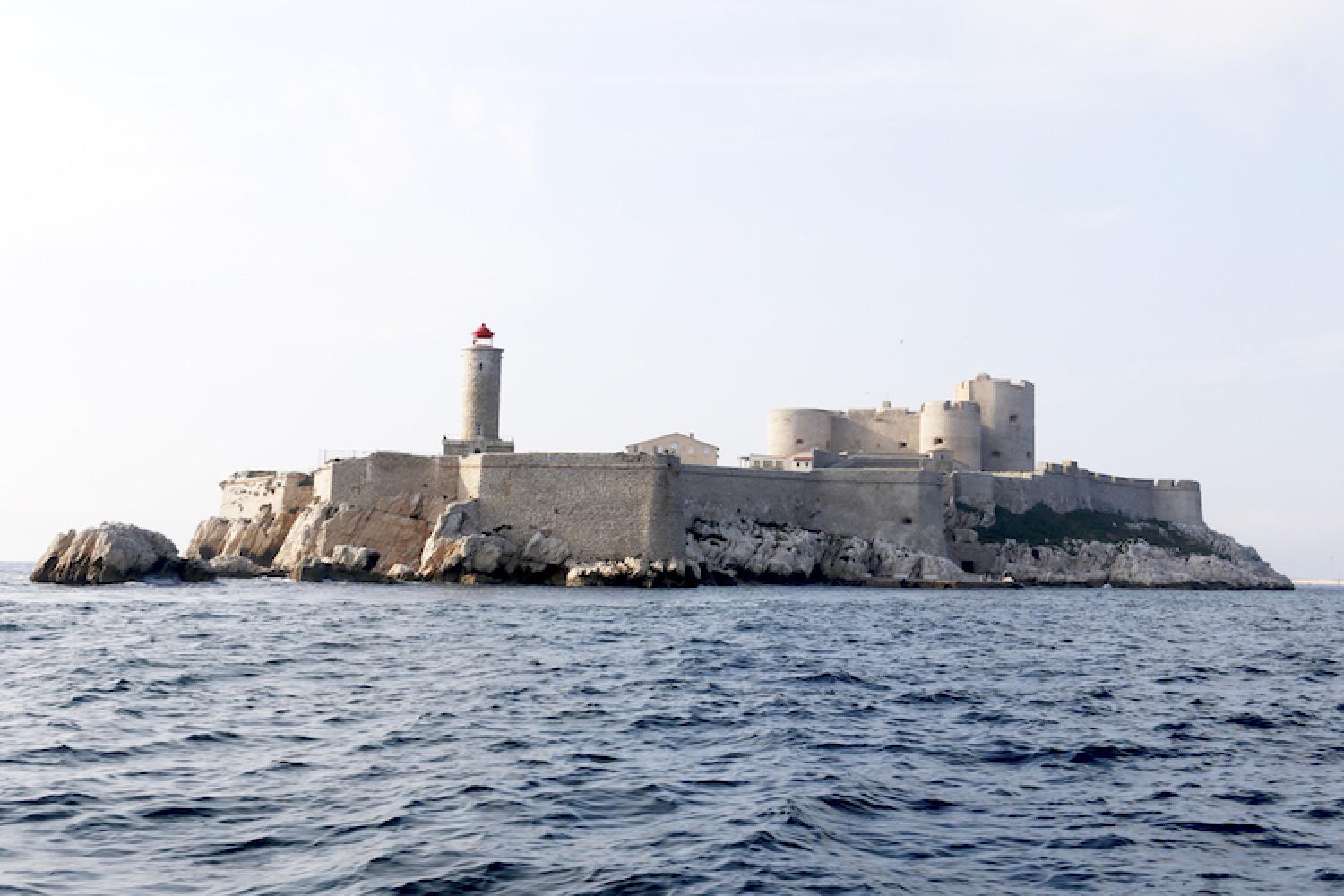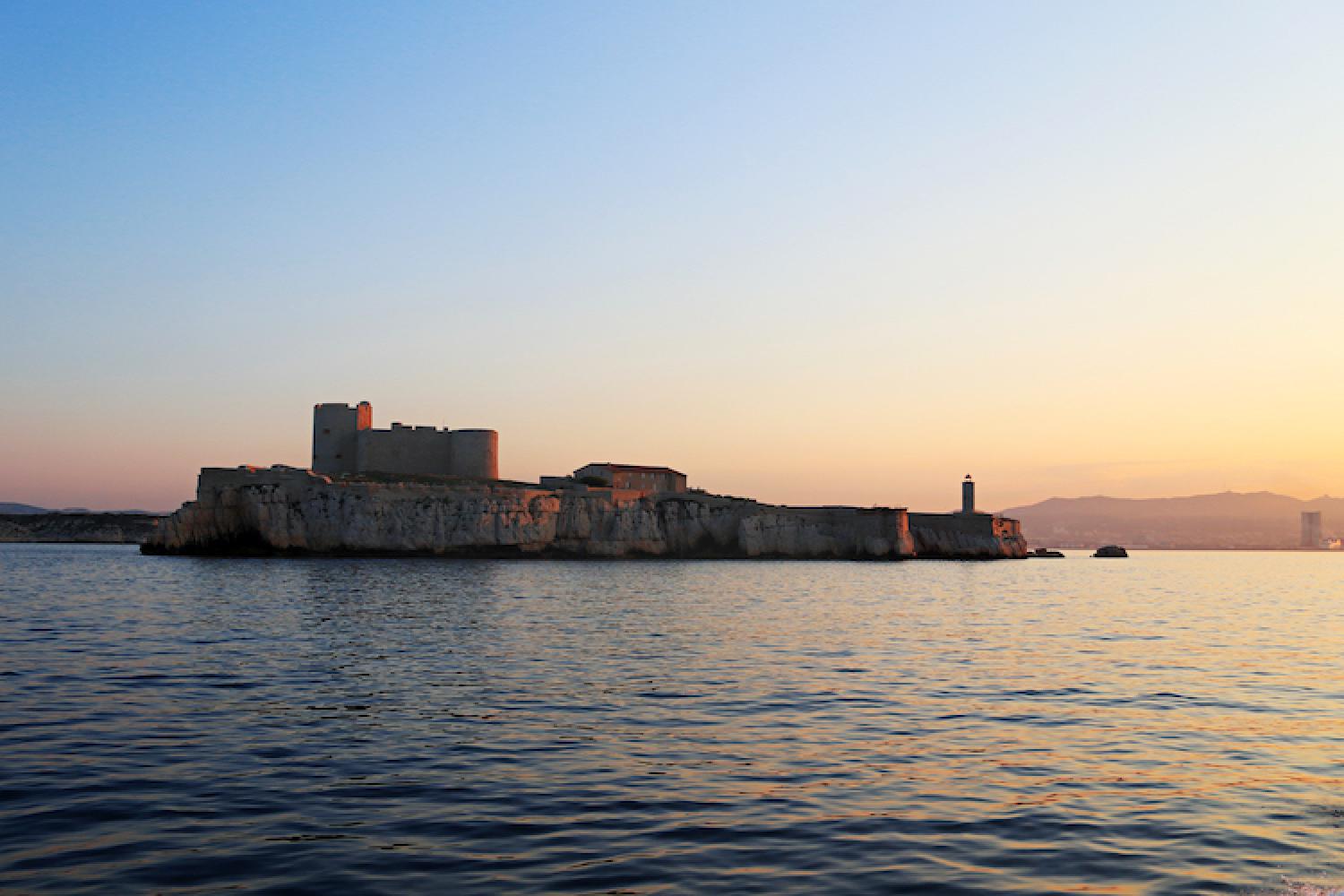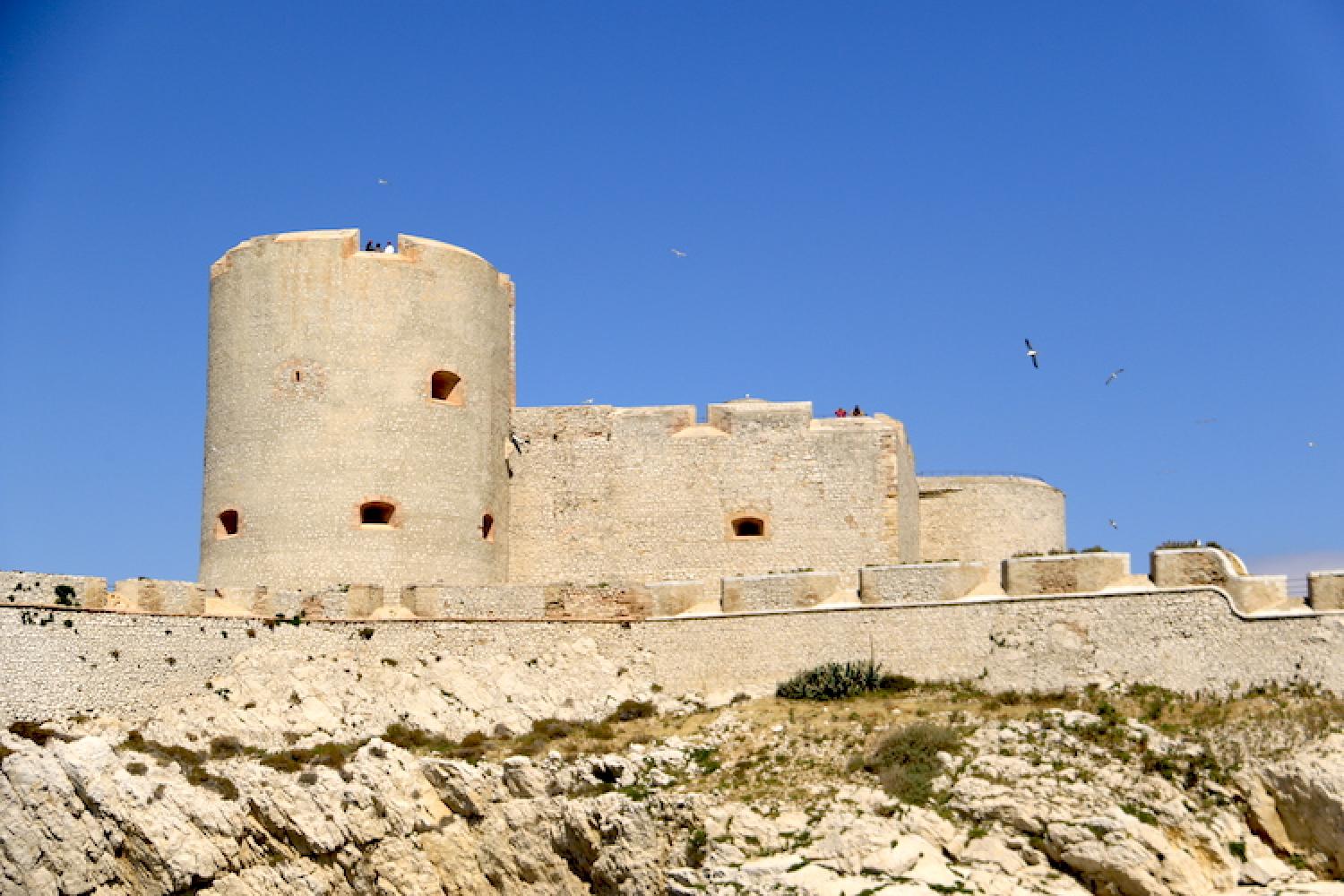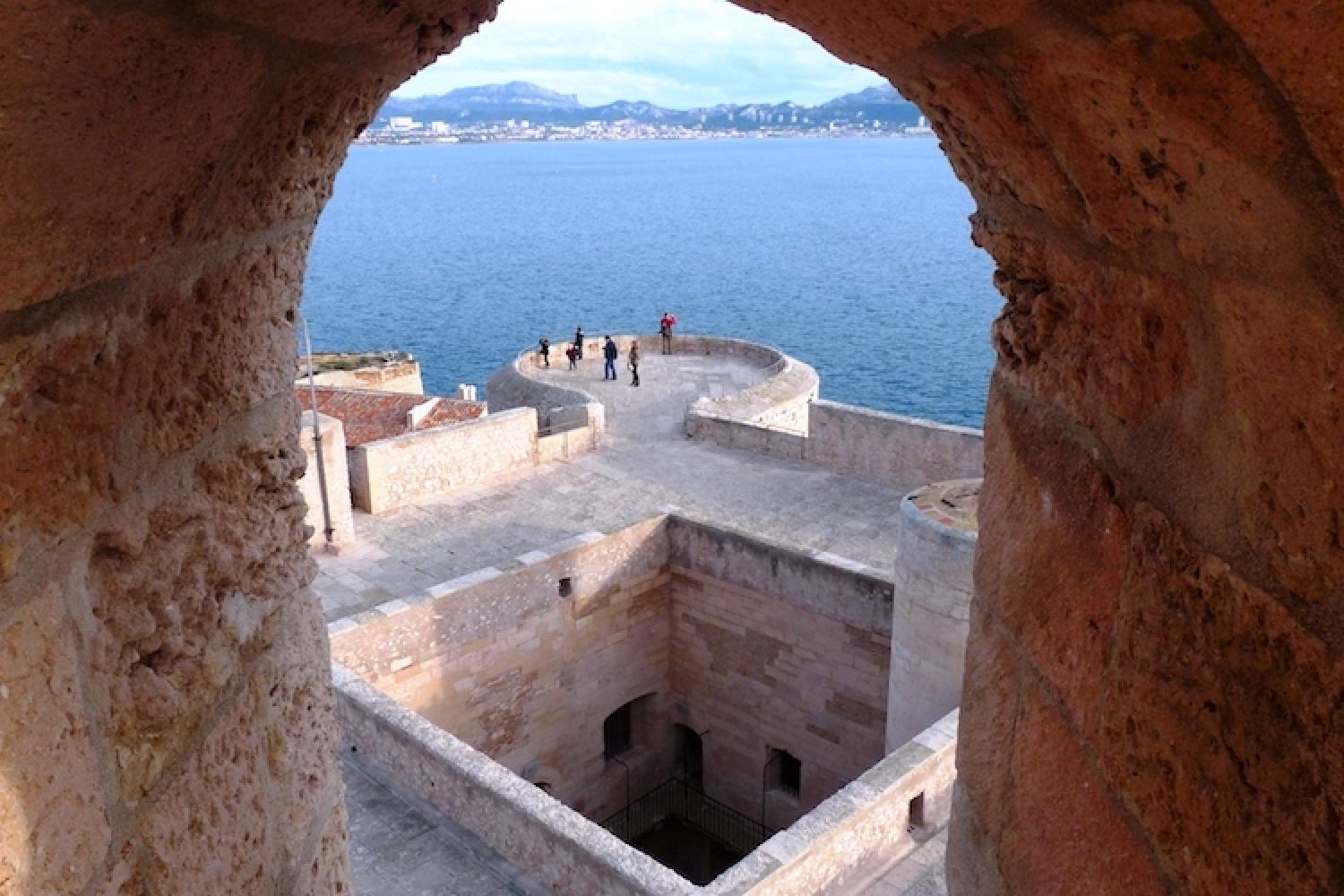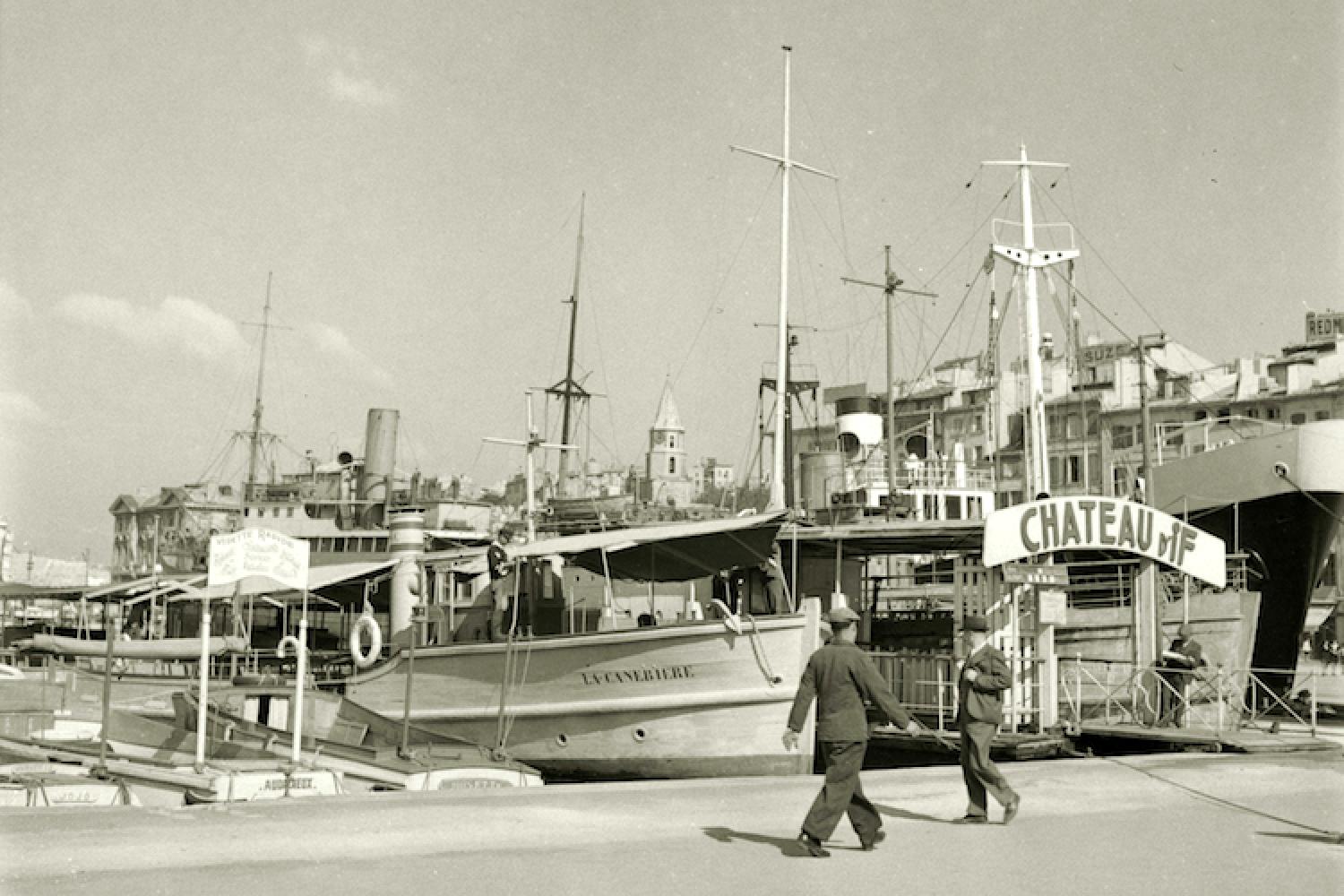An island in the heart of the national park
A strategic fortress
In 1516, the King of France, Francis I stopped in Marseille after the victory of Marignan and discovered If island. The island's position at the entrance to the harbor of Marseille was strategic, leading the king to order the construction of a fortress there.
But it wasn't until 1524, after the attack by Charles V, that the first walls of the castle were built to protect the port of Marseille where the royal galleys anchored. The objective was to watch over the population of Marseille which joined the Kingdom of France in 1481 but was often against the central power.
A State prison
Shortly after construction was completed, the fort became a prison building in the 1580s. The architecture and its isolated location, from where escape seemed impossible, made it an ideal prison. Political opponents of all stripes were detained there.
One of the most famous prisoners was the Count of Mirabeau, who was imprisoned there for a year and who became an important figure of the French Revolution. Political prisoners from the 1848 and 1871 revolutions left remarkable graffiti. These memorials are still visible. The last prisoners were Germans, held there during the First World War.
A legendary castle
The place inspires strange fascination with a pervasive aura of mystery, leading some to believe that it housed prisoners like the Marquis de Sade or the Iron Mask, but especially a certain Edmond Dantes. Château d'If is world-famous for being immortalised by Alexandre Dumas in The Count of Monte Cristo. When it was published in 1844, the novel was an immediate success.
The novel begins with the following words: "On 24 February 1815, the lookout of Notre-Dame de la Garde signaled the three-masted ship Pharaon, coming from Smyrna, Trieste, and Naples. As usual, a coastal pilot left the port immediately, skimming the Château d'If, and went to board the ship between Cap Morgiou and Riou island. Further on, Dumas writes: "Dantes was thrown into the sea, dragged to the bottom by a thirty-six ball attached to his feet. The sea is the cemetery of Château d'If".
Castle guide, François Billou tells: "The first readers began flocking to the site in 1850, as if on a pilgrimage. When I point out that the first museographic cells of Dantes and Abbé Faria were probably staged by the military in the 19th century to satisfy the curiosity of readers, visitors are surprised. Some even refute this version, preferring to believe that the story invented by Dumas is real!"
Cultural heritage
The Château d'If is a square, with sides measuring 28 metres. It is flanked by three cylindrical towers: Saint-Christophe, Saint-Jaume, and Maugouvert, pierced with large gun ports. The construction of the Vauban barracks was ordered by a famous engineer. The buildings are perched on a limestone islet named from the Greek hypea which evolved into iphium meaning "lower island", as it was smaller than Pomègues and Ratonneau, located after them on the way to the port of Marseille. Another explanation is that the word is from an Occitan term meaning "rock".
The castle and escarpment wall surrounding the small island were listed as historical monuments on 7 July 1926. This led to an increase in tourists, who were already travelling to the island on a regular line created in 1890. The trip was not very comfortable because no landing stage had yet been built on the island. These days, around one hundred thousand visitors visit the island each year.
Apart from Dumas's novel, the castle features in the chorus of the song Les îles d'or by Alibert and is the background for Barbara's Au bois de Saint-Amand clip, shot in 1967, and the film The French Connection made in 1971.
Natural heritage
Château d’If is now managed by the national monument centre which has been working on environmental themes for many years. Initially, with the CEN PACA, former manager of the Frioul archipelago, and these days with the Calanques National Park created in 2012, the centre organises environmental and sustainable development programmes, site observations with students, and visits for school groups.
The national park and castle teams work together to raise awareness among visitors about good conduct and regulations in the park.
Restoring the ramparts and protecting the local species
The ramparts of Château d'If, which date back to the 16th and 17th centuries are currently subject to a restoration project by the national monument centre (March 2019 to October 2021). At the same time, temporary and permanent measures for the protection of protected species living in the ramparts are underway, particularly the European leaf-toed gecko. This gecko, common on the islands of Marseille, has taken up permanent residence in Château d'If. Details about the project, led by AGIR écologique, can be found here and in the video below.
"There is so much to do in Marseille! Cinema, boats, trips suggested out of the blue...I was very tempted. Château d’If - a castle in the sea - it must be amazing."
Joseph Joffo, Un sac de billes
Did you know?
In 1516, an unusual passenger landed on the island of If: a rhinoceros! A gift sent by the King of Portugal to Pope Leo X, the rhino stopped over on the island of If, attracting many visitors, including King Francis I. Driven by curiosity, the monarch discovered this strategic site on his return from the Italian wars. That is when he decided to build a fort there. Unknown in Europe at the time, the rhinoceros made a lasting impression on people, particularly due to the engraving of it by Dürer.
Getting here and regulations
Before heading out to visit the Calanques National Park, make sure you are prepared and read about good conduct and regulations here.
See the official website for information and prices for visiting Château d’If.
Getting here
Frioul-If boat from the Vieux-Port. The boat also goes to Pomègues and Ratonneau islands which, like If, are part of the Frioul archipelago.
Localisation
GPS coordinates: 43.279750, 5.325111




